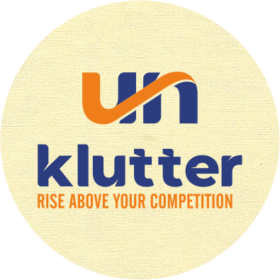Crafting the Perfect Resume: Your Ultimate Guide to Standing Out in a Crowded Job Market
When it comes to job hunting, your resume is like your golden ticket—it can open doors to exciting opportunities or leave you stuck on the outside. But what should be included in a resume to make it shine brighter than the rest? Let’s dive in and break down the essential elements that every great resume needs to have.
Why Your Resume Matters: The First Impression that Lasts
Picture this: You walk into a room full of potential employers, and you have just a few minutes to introduce yourself. Your resume is that introduction, the first impression that speaks volumes before you even say a word. It’s your chance to showcase who you are, what you’ve done, and why you’re the perfect fit for the job. But if it’s not well-crafted, it might just end up in the “no” pile faster than you can say “job interview.” An ATS-friendly resume can ensure that your application gets past automated systems, increasing your chances of getting interview calls.
The Building Blocks of a Standout Resume
Let’s talk about what goes into creating a resume that doesn’t just get looked at but gets noticed.
Professional Header: Your Digital Handshake
Your resume’s header is like the first handshake—it needs to be strong and confident. Include your name, phone number, email, and location (city and state). And for the love of all things professional, make sure your email handle doesn’t sound like it was made in middle school. Keep it simple and classy. Your professional online presence can also be reflected here with a link to your LinkedIn profile or personal website.
Personal Statement: Your Elevator Pitch
Think of your personal statement as your elevator pitch—it’s a quick snapshot of who you are and what you bring to the table. This professional summary should highlight your career goals, showcase achievements, and maybe even throw in a hint of your personality. Keep it concise but impactful, like a movie trailer that leaves them wanting more. Make sure to tailor your resume with resume keywords that match the job description, increasing your chances of catching the recruiter’s attention.
Work Experience: The Proof in the Pudding
Your work experience is the meat of your resume. List your most recent jobs first, and don’t just state what you did—highlight what you achieved. Use action verbs and quantifiable results to showcase the impact of your work. For example, instead of saying “Managed a team,” say “Led a team of 10, increasing project efficiency by 20%.” See the difference? This is what makes an effective resume that grabs attention.
Education: Your Academic Journey
Whether you’re a recent graduate or a seasoned professional, your education still matters. List your degrees, the institutions where you earned them, and any honors or relevant coursework. If you’ve been in the workforce for a while, you can keep this section brief, but if you’re just starting out, feel free to add a bit more detail. Highlight any relevant certifications and training that bolster your qualifications.
Skills: Your Toolbox of Talents
Here’s where you get to show off your hard and soft skills. Hard skills are your technical abilities—like programming or graphic design—while soft skills are your interpersonal traits, like leadership or communication. Highlight skillsthat are particularly relevant to the job you’re applying for, using resume keywords from the job description to help you stand out. This will ensure your resume is tailored to the job and fits within resume best practices.
Certifications and Achievements: The Extra Mile
If you have any certifications or special achievements, don’t be shy—put them in the spotlight. Whether it’s a project management certification or an award for top sales, these extras can set you apart from the competition. They also contribute to your career growth narrative, showing that you’re proactive in improving yourself.
Volunteer Work and Hobbies: The Human Touch
Adding volunteer work or hobbies gives employers a glimpse of your character outside of work. It shows that you’re well-rounded and have interests beyond the office. Just make sure they’re relevant or impressive—your stamp collection might not make the cut. When relevant, these sections can humanize your professional resume and contribute to a clean resume design.
References: The Closing Argument
While it’s no longer necessary to include “References available upon request,” it’s still a good idea to have a list of references ready to go. Choose people who can vouch for your work ethic, skills, and character. And yes, make sure you ask them first! This final touch ensures that when the time comes, you’re prepared to support your application with credible recommendations, making for a standout resume.
Common Mistakes to Avoid
Now that you know what to include, let’s touch on what to avoid:
- Typos and Errors: Nothing says “I’m not detail-oriented” like a typo on your resume. Proofread your resume multiple times, and have someone else take a look, too.
- Overloading with Information: Keep it concise. If it’s not relevant or impressive, it probably doesn’t belong on your resume. A concise resume is more likely to hold the reader’s attention.
- Being Too General: Tailor your resume to each job you apply for. A one-size-fits-all resume is less likely to stand out. Resume customization is key.
- Lying or Exaggerating: It’s tempting to embellish, but honesty is always the best policy. Getting caught in a lie can cost you the job.
Ready to Create a Standout Resume?
Your resume is more than just a document—it’s your personal brand on paper. By including these essential elements and avoiding common pitfalls, you’ll be well on your way to creating a resume that not only gets noticed but gets you hired. For an extra edge, consider attaching a cover letter tailored to the job application.
Feeling overwhelmed? Don’t sweat it! We’re here to help. Whether you need a quick review or a complete overhaul, reach out to us via WhatsApp or email. Let’s make sure your resume opens doors to your next big opportunity.




